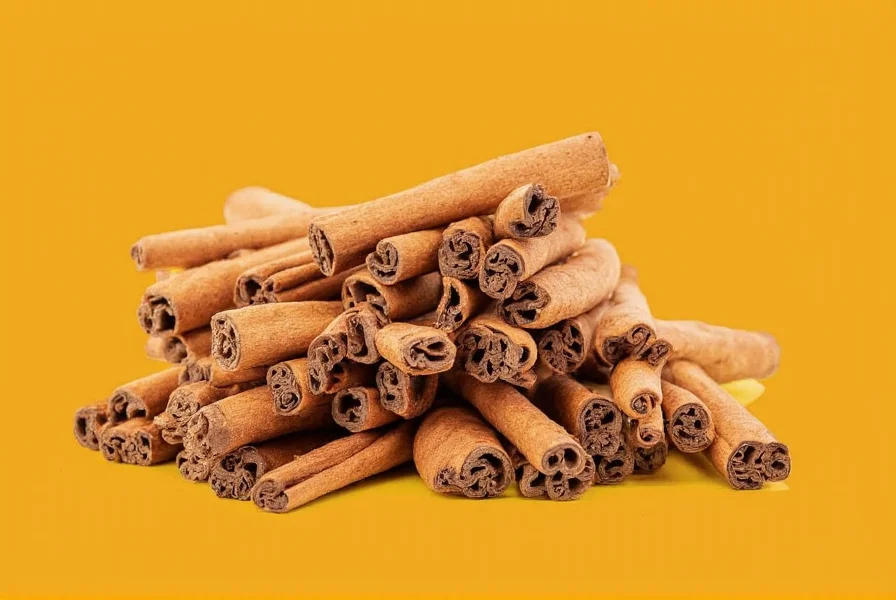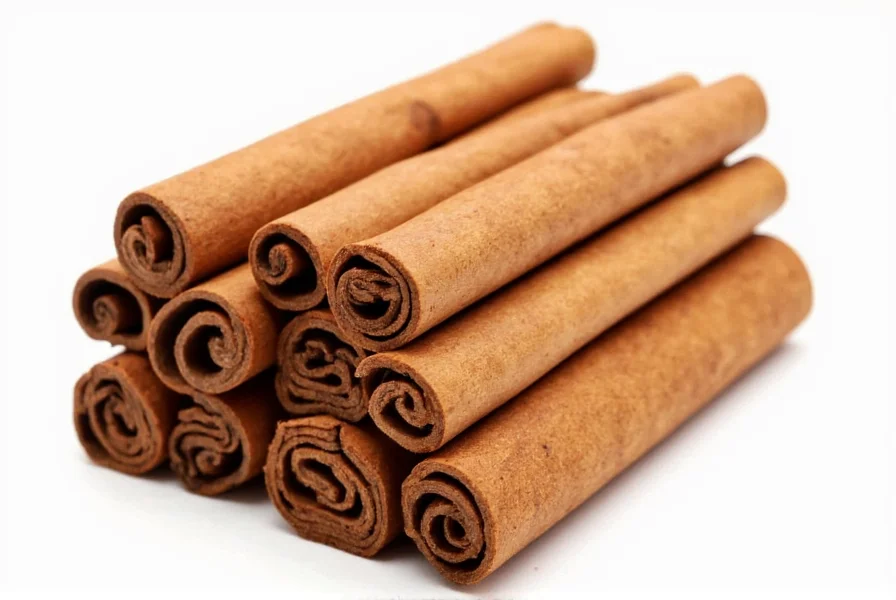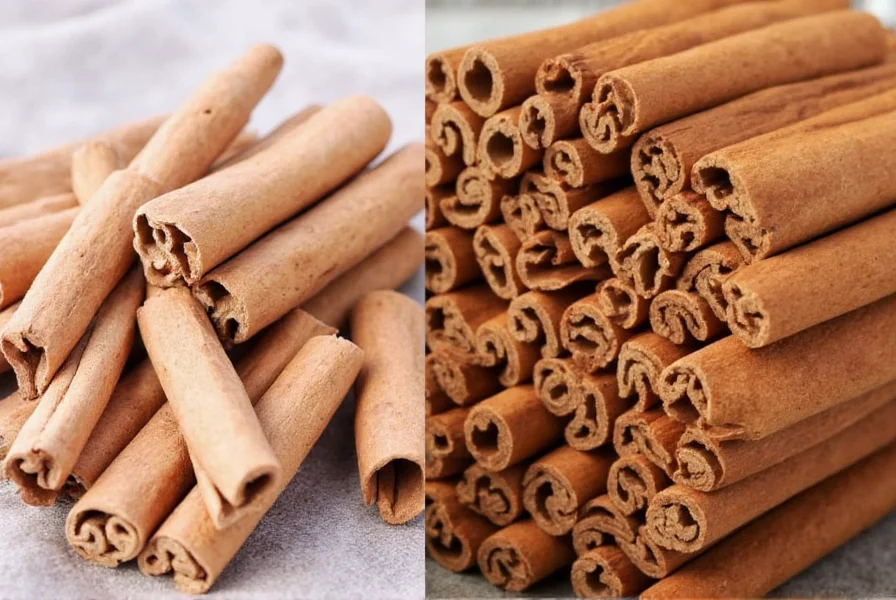When you find that forgotten jar of cinnamon sticks in your pantry, you're probably wondering: do cinnamon sticks expire? The straightforward answer is no—they won't make you sick if stored properly—but their flavor and aroma do diminish significantly over time. Understanding cinnamon stick shelf life helps you maximize both safety and culinary performance.
Understanding Cinnamon Stick Shelf Life
Cinnamon sticks, like most whole spices, are remarkably stable due to their low moisture content. Unlike perishable foods, they don't harbor bacteria or mold when stored correctly. However, exposure to air, light, and humidity causes gradual degradation of volatile oils responsible for cinnamon's distinctive flavor and aroma.
The shelf life of cinnamon sticks depends primarily on storage conditions rather than a fixed expiration date. While ground cinnamon loses potency within 6-12 months, whole cinnamon sticks maintain quality significantly longer due to reduced surface area exposure.
How Long Do Cinnamon Sticks Last?
Under optimal storage conditions, cinnamon sticks maintain peak quality for:
| Storage Condition | Peak Quality Period | Maximum Safe Usage |
|---|---|---|
| Airtight container at room temperature | 3-4 years | Indefinitely (quality declines) |
| Refrigerated in airtight container | 4-5 years | Indefinitely |
| Freezer in vacuum-sealed container | 5+ years | Indefinitely |
| Open container or poor storage | 6-12 months | 1-2 years |
These timeframes represent when cinnamon sticks maintain their strongest flavor profile. Even beyond these periods, they remain safe to consume as long as no moisture or contaminants have entered the container.
Signs Cinnamon Sticks Have Lost Potency
Unlike spoiled food, expired cinnamon sticks won't make you ill, but they'll disappoint your palate. Watch for these indicators that your cinnamon stick shelf life has diminished:
- Faded color - Fresh sticks have a rich reddish-brown hue that lightens over time
- Weak aroma - Rub a stick between your palms; strong cinnamon should release an immediate, potent scent
- Brittle texture - While some dryness is normal, excessively crumbly sticks indicate significant moisture loss
- Diminished flavor - When steeped in hot liquid, weak cinnamon produces barely noticeable flavor
- Mold or moisture - Any visible moisture or organic growth means improper storage occurred

Proper Cinnamon Stick Storage Techniques
Maximizing your cinnamon stick storage lifespan requires attention to environmental factors. Follow these evidence-based recommendations:
- Air-tight containers - Glass jars with tight-sealing lids outperform plastic bags
- Cool, dark location - Pantry shelves away from stoves, ovens, or windows
- Consistent temperature - Avoid areas with frequent temperature fluctuations
- Moisture control - Include silica gel packets in storage containers in humid climates
- Buy whole sticks - They maintain potency 2-3 times longer than pre-ground cinnamon
For extended storage beyond two years, consider vacuum-sealing cinnamon sticks and freezing them. This method preserves volatile oils exceptionally well, though most home cooks find room-temperature storage sufficient for typical usage patterns.
Using Older Cinnamon Sticks Effectively
When your cinnamon sticks have passed their peak freshness but show no signs of contamination, you can still use them effectively:
- Grind before use - Increases surface area to release remaining oils
- Steep longer - Simmer sticks 10-15 minutes in liquids rather than 5-7
- Use more - Increase quantity by 25-50% to compensate for diminished potency
- Make extracts - Soak sticks in alcohol or glycerin to capture remaining flavor compounds
- Repurpose - Use spent sticks for potpourri or natural air fresheners
Remember that how long do cinnamon sticks last depends on your personal flavor standards. Some cooks prefer the milder flavor of older cinnamon in delicate recipes, while others demand maximum potency for baking and spiced beverages.
Safety Considerations for Long-Term Storage
Unlike many pantry staples, properly stored cinnamon sticks present minimal safety concerns even after years. The primary risks come from improper storage:
- Mold growth - Only occurs if moisture enters the container
- Pest infestation - Insects may penetrate poorly sealed containers
- Contamination - From dirty utensils introducing moisture during use
If you notice any organic growth, unusual odors, or evidence of pests, discard the cinnamon sticks immediately. When in doubt about do cinnamon sticks go bad safety, remember that the worst outcome from using degraded cinnamon is disappointing flavor—not illness.

Maximizing Your Cinnamon Investment
To get the most from your cinnamon purchase:
- Buy from high-turnover retailers to ensure freshness
- Store whole sticks rather than pre-ground whenever possible
- Keep containers away from heat sources and direct sunlight
- Use clean, dry utensils when handling to prevent moisture transfer
- Label containers with purchase dates for rotation purposes
Understanding how to tell if cinnamon sticks are still good saves money and enhances your cooking. While they never truly expire from a safety perspective, recognizing when their flavor has diminished helps you maintain culinary standards.
Can you get sick from using old cinnamon sticks?
No, properly stored cinnamon sticks won't make you sick even after many years. They lose flavor potency but remain safe as long as they've been kept dry and free from contaminants like moisture or pests.
How can I test if my cinnamon sticks are still potent?
Rub a stick between your palms vigorously for 10 seconds, then smell your hands. Fresh cinnamon should produce an immediate, strong, sweet-spicy aroma. If you barely detect any scent, the sticks have significantly lost potency.
Do cinnamon sticks last longer than ground cinnamon?
Yes, whole cinnamon sticks maintain their flavor 3-4 times longer than ground cinnamon. The reduced surface area minimizes exposure to air and light, which are the primary factors in flavor degradation. Ground cinnamon typically loses potency within 6-12 months.
What's the best way to store cinnamon sticks for maximum shelf life?
Store cinnamon sticks in an airtight glass container in a cool, dark pantry away from heat sources. For extended storage beyond two years, vacuum-seal and freeze them. Always use clean, dry utensils when handling to prevent moisture transfer.
Can I revive old cinnamon sticks that have lost flavor?
You can partially restore flavor by grinding older sticks to increase surface area, steeping them longer in liquids (10-15 minutes instead of 5-7), or using 25-50% more than recipe specifications. For maximum flavor recovery, make a cinnamon extract by soaking sticks in alcohol or glycerin for several weeks.











 浙公网安备
33010002000092号
浙公网安备
33010002000092号 浙B2-20120091-4
浙B2-20120091-4